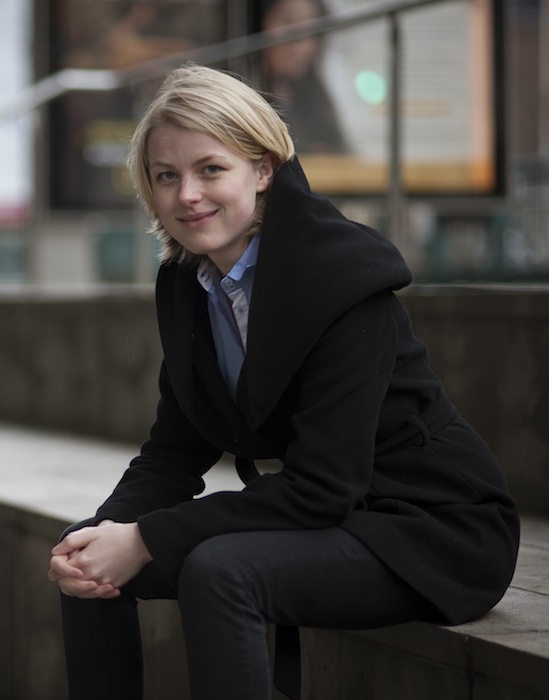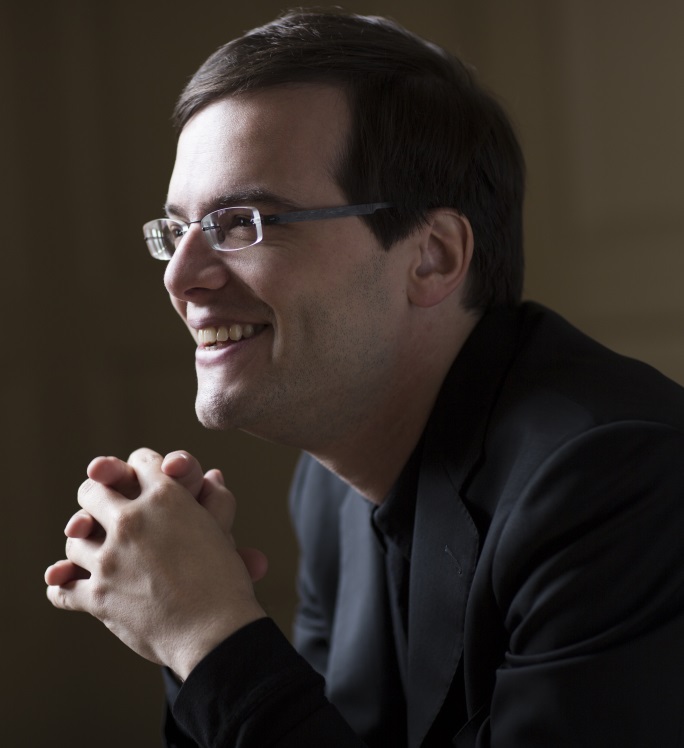Reinhardt creates excitement in subbing stand with DSO

Assistant conductor Ruth Reinhardt led this week’s Dallas Symphony Orchestra program.
Stanisław Skrowaczewski cancelled his appearances with the Dallas Symphony this past weekend, leaving a substantial repertoire on the plate for the orchestra’s assistant conductor, Ruth Reinhardt. Thursday night at Meyerson Symphony Center, in the tradition of young assistant conductors called upon to fill in for ailing masters of the baton, Reinhardt, poured herself intensely into this stylistically varied agenda of works of Lutoslawski, Mozart, and Brahms.
Lutoslawski’s Concerto for Orchestra opened the evening. No light-hearted curtain raiser here. Holding this largely dark, musically demanding piece together may have been the most daunting task of the evening for Reinhardt, a German-born graduate of Juilliard.
Any work titled “Concerto for Orchestra” falls under the shadow of Bartok, of course, and Lutoslawski was clearly up to the task when he created this three-movement symphonic work in 1954. Still virtually unknown and working in the relative cultural isolation of a Communist Poland, he yet managed to integrate his earlier interest in Slavic folk music with a sophisticated command of mid-twentieth-century dissonance. Ironically, faced with the conflicting demands of a police state and the desire to reach an international audience, Lutoslawski managed to create one of the more successful and widely performed orchestral works of the second half of the twentieth century—a success attested to by the enthusiastic audience response Thursday evening.
Equally impressive beyond the sheer surface appeal of the work is Lutoslawski’s bold structural innovation, in which he creates a form that resembles the traditional concerto in its three movements but is miles from textbook symphony structure. The contrasting phrases and sections—sometimes violently primitive, sometimes disarmingly pastoral, even occasionally jazzy—progress with a subtle logic that bespeaks a genius at work.
As for the performance itself, the title clearly implies virtuosic demands on individual musicians as well as sections, which in turn places a heavy burden on the conductor who must manage this universe of sounds. While appropriately shepherding the orchestra through its many adventures, Reinhardt took her cue from the stormy opening passage, dominated by a throbbing tympani solo. This allowed Reinhardt to set a tone of muscular, sometimes risky music-making that she maintained throughout the evening.
The middle movement of this work exemplifies both the innovation of the piece as a whole and the demands on the performers. Here, the excruciatingly difficult perpetual motion figure in the strings was beautifully managed, giving way to radiant brass fanfare and a surprisingly quiet pizzicato close for the movement. Rather than the high energy blast one expects in traditional concerto form, that tiny plink from the basses provides the germ from which the finale flows to the controlled chaos of the closing passage.
Reinhardt had begun the work at a high energy level, and, though she might have paced with a little more caution, the excitement level of the closing section emerged intact.

Francesco Piementosi
Mozart’s Piano Concerto No. 27, while much quieter and less complex than the Lutoslawski work, offers challenges of its own. Convincingly presenting Mozart’s orchestral music in a modern concert hall inherently invites issues of balance; Reinhardt did not entirely solve this concern, allowing the winds to overwhelm the strings from time to time, thus upsetting the delicate interaction demanded in this music.
However, the Italian pianist Francesco Piemontosi achieved the ideal Mozartian balance of energy and elegance in the piano part, as well as creating an ear-catching timbre with an artful pedal technique. Along with the entrancing effect Piementosi conveyed with his crystal technique and uniquely shaded tone, Piementosi and Reinhardt impressively achieved an intriguing hint of darkness in the first two movements before going all-in for the buoyant playfulness of the finale—an example of masterful pacing owing much, in this case, to the soloist.
Brahms is, of course, a significant part of any traditional orchestra’s repertoire, and his music has been particularly prominent in this fall’s concerts of the DSO, with the Violin Concerto and Ein deutsches requiem appearing on earlier concerts.
This program continued the unofficial Brahms retrospective by adding a third genre in the form of the Fourth Symphony. Parallel to the ear-grabbing opening of the Lutoslawski Concerto, Reinhardt here launched the dark opening theme with a broadly passionate, full-volume approach, exploiting a fine, rich sound from the DSO strings. The somber march theme of the second movement took on an ominous urgency, thanks to a neatly executed but ever-so-slight internal acceleration in the opening statement.
The Allegro giocoso third movement bounded with joy before the return of stormier passions in the finale. This high-contrast, adventurous reading of the Brahms, along with the opening Lutoslawski, made for a memorably high-volume evening. While Reinhardt occasionally sacrificed precision for breadth and passion y, the results were consistently exciting.
The program will be repeated 2:30 p.m. Sunday. mydso.com; 214-692-0203.